Last week while in Malta I broadcasted a few of my swim sessions live to those that wanted to watch as I slowly plodded across the warm tropical waters of the islands. I had sent out the link via Twitter with no warning, and many of you asked exactly how it all worked. So I figured I’d put together this post to explain all the pieces – from the cellular tracking to the heart rate data to the video live streaming. In the event however you prefer a video to the written word, I whipped up a quick video too! It’s right here:

Or, for those more on the written/photo side, you can continue on! Note that in the video I don’t discuss my toying with Livestreaming and a GoPro, nor do I cover my jellyfish foray, so you’ll want to read those sections too!
Live Tracking with the Garmin FR920XT while openwater swimming:
For almost two years now Garmin has had Live Tracking as a capability of its fitness platform. It started with the Edge 510 and Edge 810, which introduced the ability to pair to a cell phone and transmit your location in real-time to friends/family/stalkers. It shows your trail on a map, as well as speed/pace/distance data and further allowed you to send ANT+ data like cadence, heart rate and power. The running focused Forerunner 220 & FR620 inherited the Live Tracking functionality a year ago upon their release.
With that as a background, I was curious to see if I could make it work while swimming. The obvious challenge here being that unlike the Bia women’s watch, the Garmin FR920XT doesn’t contain an internal 3G chip/antenna. Rather, it requires your cell phone. So that would mean I’d need to take my cell phone with me swimming.
Of course, while some phones are actually waterproof – the iPhone is not one of those phones. But that wasn’t a huge problem, for that I’d simply stick it in my swim buoy. For all my openwater swims I take it with me to provide visibility to boats so I don’t get run over. The buoy has a waterproof compartment perfect for storing stuff (including everything seen below like my sandals).
So to get started I got the phone and the 920XT all paired up and talking to each other. Then I snuck the phone in the waterproof compartment that sits in the swim buoy above the water perfectly accessible to cellular signals.
For the purposes of my experiments, I sent out a notification to Twitter as well as a few people via e-mail. That would share my location live to them for the duration of the swim, and then show the swim track for 24 hours afterwards.
Next, I simply got ready to swim. I was careful to try and keep the watch above the water as much as possible while getting ready. I’ll point out the obvious: Bluetooth Smart signals don’t go through water. So, the only connection the phone and device will have is when the FR920XT is above the water.
With that set…I simply swam:
And, as it turned out – the Live Tracking portion actually worked quite well! People saw my track file online in real-time without any major technical issues:
I found that as long as I swam normally and continually, the signal never dropped. If however, I let my wrist with the FR920XT submerge below the surface more than about 3 seconds, then the watch would give me a warning vibration that “Phone Disconnected”. To remedy that, I’d hold it back above the water for about 2-3 seconds and it’d buzz “Phone Connected”.
The only time that 3 second signal drop happened was when I had stopped to grab my camera. During normal swimming it never triggered a loss of phone/connection. I did see one case though where it didn’t seem to reconnect after I had taken a bit longer underwater (about 60 seconds to get the Jellyfish photos). I had to enable/disable Bluetooth on the phone after that at the end of a swim session a few hundred yards later, but while it reconnected it didn’t properly backfill the trackfile gap – but rather just bridged the two points.
Now, there was one unexpected side effect that took a few swims to narrow down. Specifically that the track looks a bit rough (like I was drunk). This appears to be a bug in the 920XT openwater swim mode only when Live Tracking is enabled. Typically the way openwater swim mode works is that it reduces the plotted track points in order to create a smoother track. All GPS watches do this when tracking openwater swims due to the every-stroke GPS signal loss. It’s a math game more than anything else.
It appears that in the openwater swim mode when Live Tracking is enabled that it significantly increases the track point rate plot rate, resulting in drunk tracks because they aren’t fully processed/smoothed. Ironically however, the distance calculation is clearly done separately, as I’d get near identical distances to that of the Ambit3 with its smoothed tracks. Hopefully Garmin will be able to correct that in a firmware update, seems like it should be an easy fix.
Still, it’s definitely a cool solution that overall actually works quite well for location tracking – especially for those doing long distance swim training in openwater by themselves that want family members to keep an eye on where they are.
Capturing Heart Rate Data with the FR920XT while openwater swimming:
Next up is a much shorter explanation – which is capturing of heart rate data. For this, it’s first important to understand that neither ANT+ nor Bluetooth Smart can transmit through water more than about 1-2 inches (3-6cm). Just can’t happen. Instead, what some companies such as Polar do is to use analog signals in their straps to transmit underwater (such as on the V800). While others like Suunto with the Ambit3 are doing a ‘store and forward’ paradigm where the strap stores the heart rate data and then synchronizes it when above the water. So it’s not live data, but rather end-of-set/swim data. Which, works out great for data capture but isn’t ideal for mid-set HR guidance.
Meanwhile, Garmin has never really played in that space at all. They’ve always restricted the ability to enable the heart rate sensor while in the swimming mode – so you couldn’t pair a HR device and still get swim metrics (distance/stroke/etc…). Of course, that’s likely because at the time those decisions where made there weren’t wrist-based HR straps on the market. Now there are.
And that’s exactly how I get HR data to the FR920XT. See, with an optical sensor such as the Mio Link, I’m able to place the device right next to the Garmin FR920XT. It’s then able to transmit via ANT+ that 1” or so to the watch, and capture the data.
But – and this is important – this is only because Garmin has left the ANT+ heart rate pairing capability present in openwater swim mode. Whether this was on purpose or by accident is unclear (I’ve asked, no response on that one). It’s not enabled on pool swim mode, and even on openwater swim mode you can’t add the HR data field to be shown as a data page, it’s only recorded for later analysis.
All that said…it does work, at least more or less just fine from a signal standpoint.
What I found in my testing was that the signal itself from the Mio Link to the FR920XT transmitted just fine the entire time. What wasn’t 100% accurate was my heart rate. For the first portion of the swim it was abnormally low, then like a light switch it was seemingly accurate the second half of the swim. Since I never stopped, I’m not clear what changed.
However, this doesn’t surprise me – nor is it actually a bad thing (yet). See, optical HR even on dry land can require a bit of ‘fact finding’ to determine optimal position for a given person and activity. While I know my optimal position above water, I need to play around a little bit to find it in the water. Something that minimizes the impact of the water on the device while still being close enough to transmit. As one can see – it transmitted 100% of the time, so it’s not an FR920XT issue, but just a Mio Link positioning thing. I’ll figure it out.
Finally, for those curious – yes, the Scosche would work here too. It’s a bit trickier though because that unit is better suited to upper arm areas – but that’s too far away from the watch. Nonetheless I have done some preliminary testing while swimming with success using it near/on my wrist (and other DCR readers have too).
And as for whether or not Garmin enables the HR capability for pool swims (or disables it for openwater), I’m not sure. But, I think it’s a suitable way for them to compete with Polar and Suunto and their various underwater heart rate recording options. An area where Garmin has nothing to offer today, so an 80% solution is better than a 0% solution.
Livestreaming the swim’s video with a GoPro:
Finally, we get to a little side project that I was hoping to pull all the pieces together to make it happen in Malta, but…things didn’t quite work out. But, I’ll cover where I got to in my experiment, since I got all the pieces individually working – just ran out of swims in Malta to tie it all together as one solution.
The end-goal of this was to use new capabilities from the Livestream service to attach to a GoPro Hero4 via my cell phone stuck in a swim buoy and then have that stream to the interwebs where some non-busy person could see me in the frame as I swam across pristine turquoise waters.
So, let’s talk through all the pieces of that.
First, is the camera and the buoy. For this I wanted to use the swim buoy that I have, since I’d be swimming with that already. There was no reason to re-invent the wheel here in my opinion. My first test was simply using a GoPro curved adhesive mount to the side of the buoy. In order to test things I let the mount harden during the day, and then attached the camera to the buoy while I went to dinner. After which I kerplunked it in the bathtub at the hotel. I was curious if it’d still be upright when I returned.
Upright turned out not to be the issue. Rather, it just fell off. The weight of the GoPro on the slightly flexible plastic meant that the sticky mount wasn’t really ‘locked’ on there. So that as a solution was out.
So I pondered my options. While at home I’d have a ton of interesting solutions, I wasn’t at home. I was in a hotel room on a relatively remote island. Supplies were limited. But, I had an idea. I’d use a spare heart rate strap and attach an adhesive mount to that instead. That’d provide a non-flexible surface, and also re-center things a bit. Presto!
This had the benefit that I could attach a few safety zipties in case stuff went wrong – both on the camera, but also below water on the strap to buoy arrangement.
Next, was going for a test with just this portion of the setup. So I got it all hooked up and went out for a swim. That worked for about 6 meters. Maybe 7 meters. Here’s an actual snippet from the video:
Then about 6-7 meters later, it looked like this:
It would flip up/down constantly, the weight of it simply turning the swim buoy upside-down. I had neglected to pack anything in the buoy. Normally when I’m swimming I’ve got sandals in the bottom, along with keys, phone, etc… In this case, I had…well…nothing. So that meant it was now top-heavy. No worries though, that piece I could solve, that’s easy since this was just a case of not doing what I normally do in a test swim. Go figure.
Next we’ve got the actual transmission portion. For that I’d use the Livestream app. That’s an app by the huge Livestream service (a separate company). They stream all sorts of things, from concerts to state events. They have various tiers of service including free. The key differences between those tiers are really around ability to white label or customize access to a channel. From a streaming perspective, it all works the same. I selected the free tier for now.
With the GoPro Hero4 they announced the ability to tie it together and broadcast out from any Hero3 or Hero4 GoPro unit. So, I tried that. Turns out, that’s actually not the case. In fact, despite all the marketing and technical documentation otherwise – it doesn’t yet work with the Hero4. It’s that kind of stuff that really pisses me off. Seriously, just state ‘It’s coming soon!’, rather than pretending it works and letting people flounder around trying to get it working.
In any case, I got the connection working with the Hero3. The app connects to the GoPro via WiFi and effectively uses the GoPro preview functionality as the video stream. In general, the connectivity piece does work somewhat well.
The downside here is that the quality is super-duper-low. To illustrate this, I went ahead and created a stream over 3G from the island I was at. You can see the upload speed is more than sufficient for fairly high quality content:
But in reality, here’s what was actually captured on the Livestream service (if you sign-in to their service, free, you can look at the video here):
Yup, pretty ugly compared to the raw video seen below:
And that’s approximately the point of my overall experiment that I ran out of swims to make this all work. At this point though, I’ve got all the pieces working independently, but I just need to tie it together. Of course, I don’t really expect it to look terribly great…but…I’ll try. The key thing here is that it’s not actually the 3G upload bandwidth that’s the limiter. Rather, it’s currently a limitation of the GoPro to the phone and the streaming quality there. I can actually stream a higher quality video stream from the phone itself to Livestream, just without the whole waterproofing thing. Still, more to come!
Random Tech Opinion: I see huge potential for someone else to one-up the GoPro/Livestream relationship here and burst this open. It could actually come from one of two sides, the device or the software side. From the software side I think YouTube is a far better partner, since it’s a crapton cheaper and without the annoying paywalls and sign-up walls. YouTube supports various live streaming functionality, but none of which is easily done with the GoPro. GoPro could go this route themselves and open things up to way more people there than Livestream.
The other option is for a device company to all-in-one the whole thing. For example, as much as GoPro wants to be a media company, it outsourced this solution to Livestream, resulting in what as far as I can see is a less than ideal technical implementation (for example, I can’t shut off the screen of the app). Thus, it leaves the door open to Sony, Garmin, and others to nail this either in-house, or with partners as noted above. Just like Garmin offers a Live Tracking feature for their fitness devices, the same thing could be done with the VIRB down the road. Heck, I’d happily pay a nominal subscription fee for the feature. And I think if priced right with the right quality level people would go for it.
Finally, these sorts of things are huge attention getters when you look at pro athletes and sponsored athletes. The ability to slap a camera on during a training or racing activity offers so many opportunities for companies that are untapped – as well as for the athlete themselves too.
In any case, it’s an interesting experiment in the realm of what’s possible.
Oh…and those Jellyfish?
For those that don’t care about technology, well, here’s the most non-technological thing I can add to this post. Not all of my swims were peaches and cream awesome. One swim in particular (one I was transmitting Live Tracking data no less) ended up with me finding some local wildlife.
Now for the vast majority of all of my swims I saw nothing but the occasional little fish. The Med isn’t exactly known for being the epicenter of underwater corrals or tropical fish. But that’s OK, it was pretty and clear water, so I was content.
Except apparently some of the local animals were not content with me being there. Just after I started to make my way across the semi-large bay opening, I felt a slew of pricks down my arm. Like a bunch of tiny needles combined with electricity. Not awesome. But also not a stingray.
But I wasn’t quite clear what it was at first, at least for another 5-7 minutes until I saw my first little jellyfish, then I put two and two together.
It was just a short bit after that that the second little critter found me – this time apparently sliding over my head and down my back. This time it was definitely not awesome. A few minutes later I narrowly avoided his brother from another mother, and stopped briefly to take a photo:
(For those curious, it was with a GoPro Hero4 Black in burst mode, quality was a fair bit better than I expected actually. I then re-cropped the images since it was shot initially in wide angle somewhat far away.)
Of course, I didn’t really have anywhere to go but to keep swimming. Stopping wasn’t an option.
Which, upon looking at the interwebs later on actually worked out fairly well. Turns out that salt water was one of the best thing you could apply to it. Of course, that didn’t stop it from looking pretty awesome by time I wrapped up my swim and walked the 5-10 minutes back to the hotel room:
Fear not though, despite my luck with aquatic marine life, within a few hours it was all but gone and there was never any major pain (or any itching at all). Just a bit of ‘warmth’, kinda like a sunburn. Still, I’ll be sure to avoid the more sketchy jellies in the future.
—
Enjoy, and thanks for reading! And, keep an eye on Twitter, where I’ll make broadcast announcements at random times. Though, given I’ll be in New Zealand the next 10 days, you can likely assume that on weekdays such announcements would be early morning local time (6-8AM), or evening (5-8PM), since that’s when I wouldn’t be working. Or, at least, hopefully not working… On weekends, all bets are off!
FOUND THIS POST USEFUL? SUPPORT THE SITE!
Hopefully, you found this post useful. The website is really a labor of love, so please consider becoming a DC RAINMAKER Supporter. This gets you an ad-free experience, and access to our (mostly) bi-monthly behind-the-scenes video series of “Shed Talkin’”.
Support DCRainMaker - Shop on Amazon
Otherwise, perhaps consider using the below link if shopping on Amazon. As an Amazon Associate, I earn from qualifying purchases. It doesn’t cost you anything extra, but your purchases help support this website a lot. It could simply be buying toilet paper, or this pizza oven we use and love.

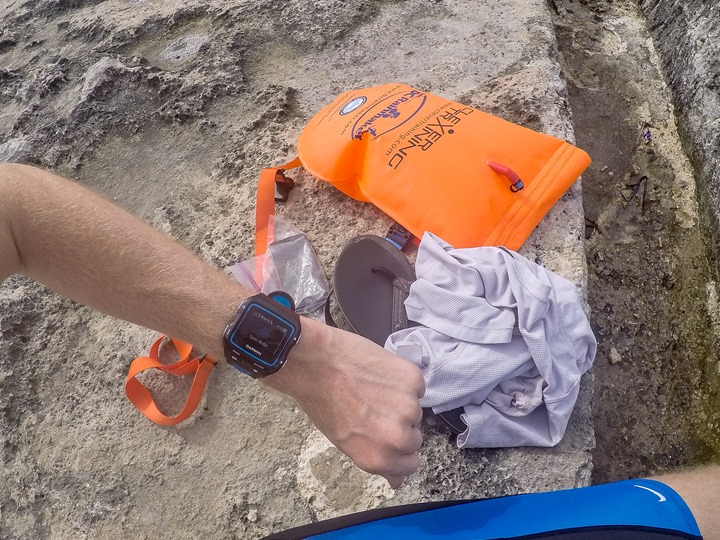
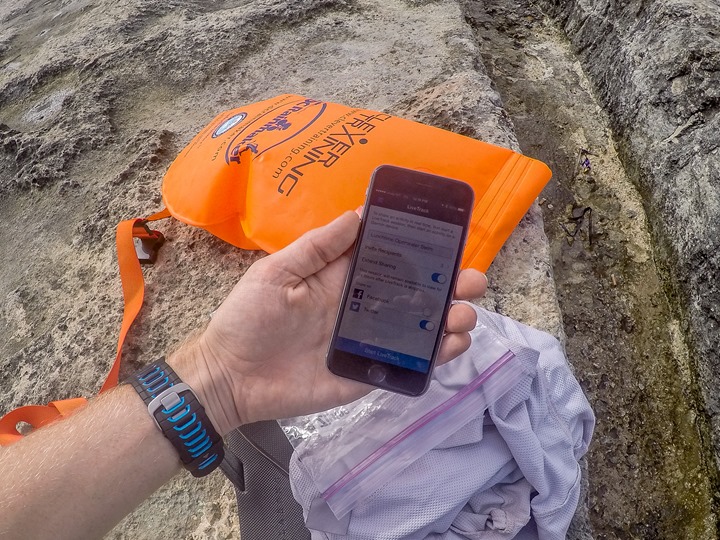
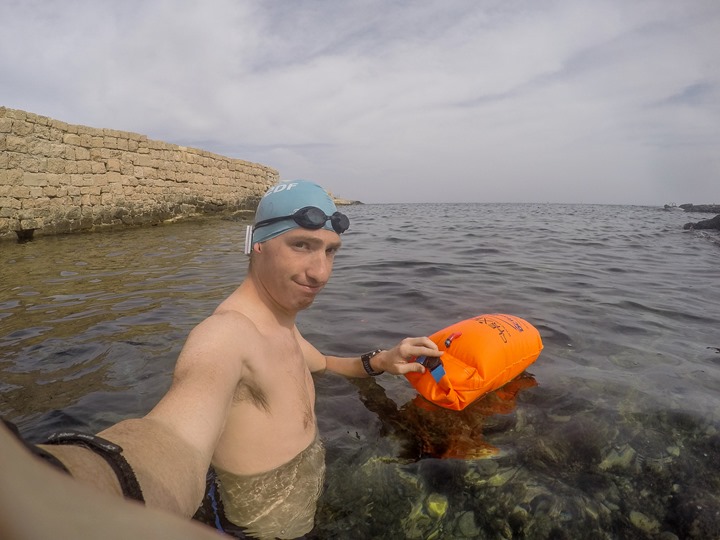
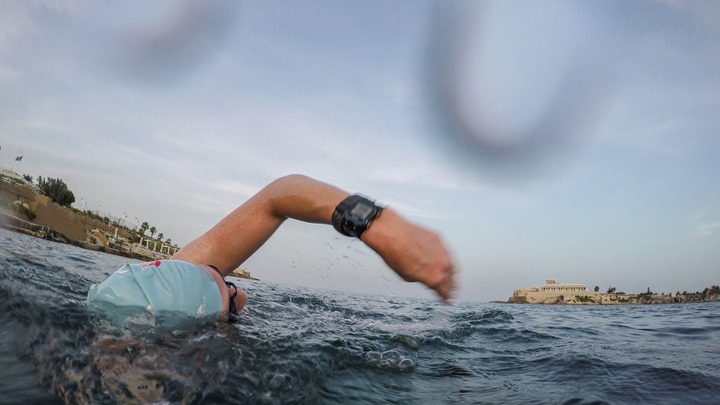
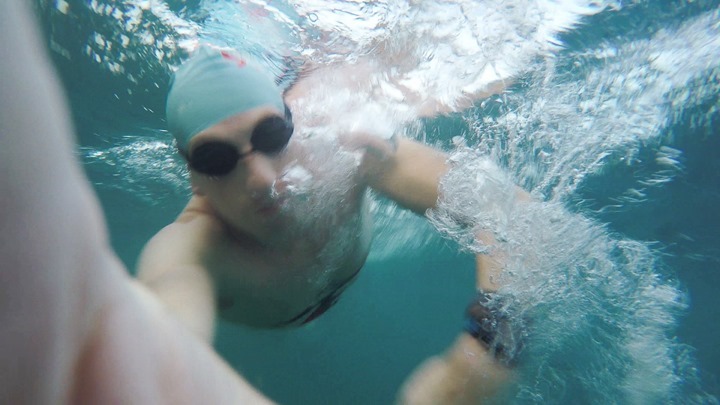
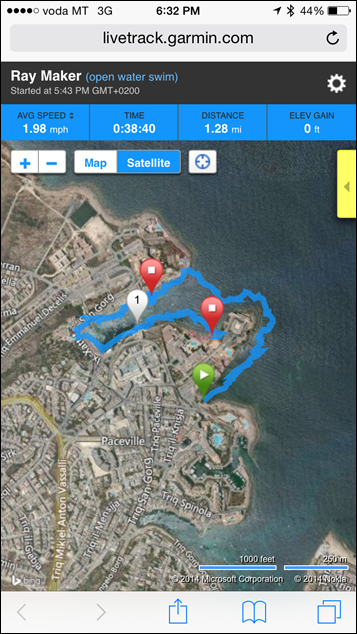
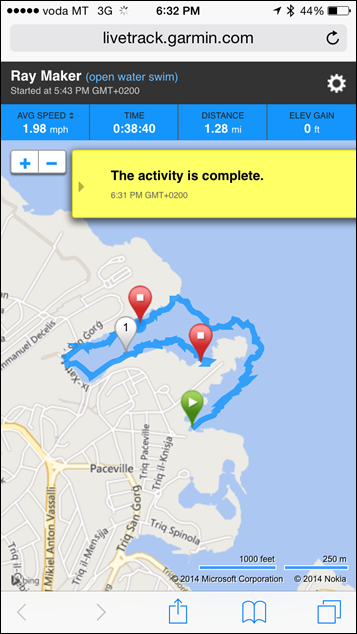
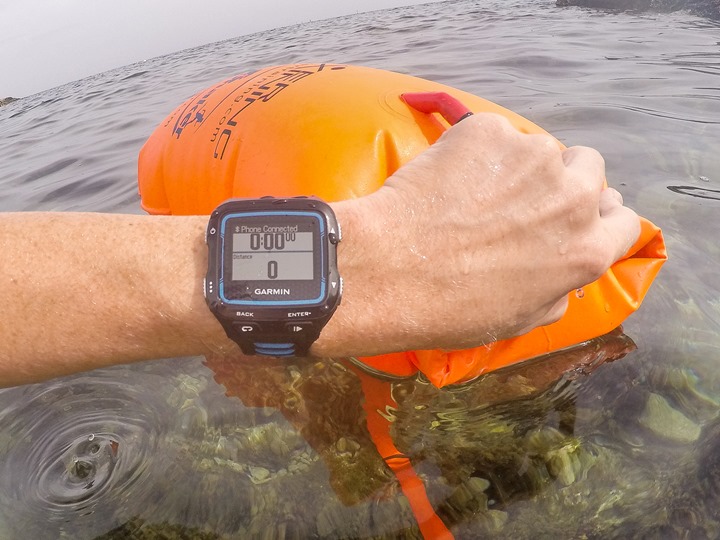

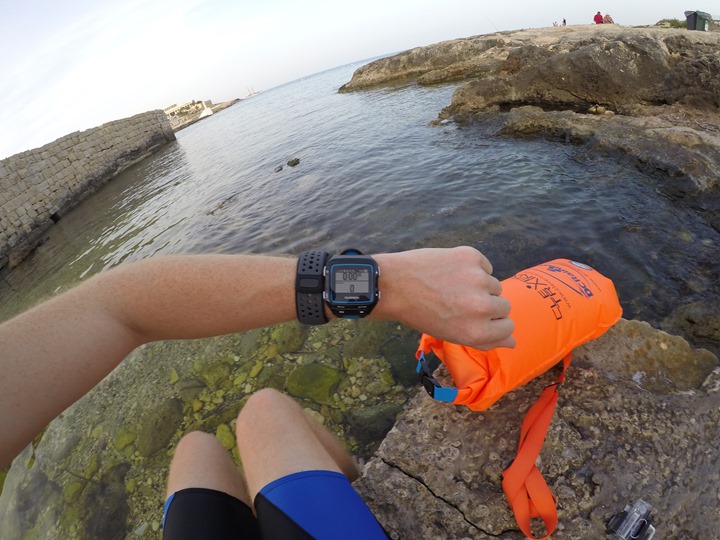
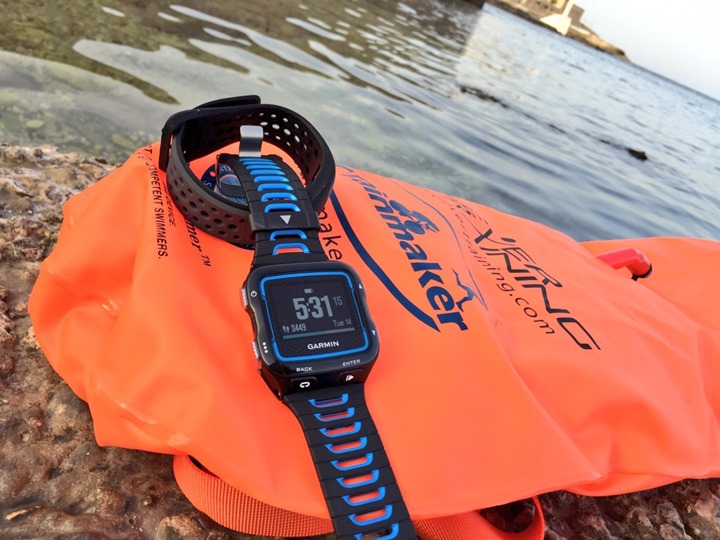

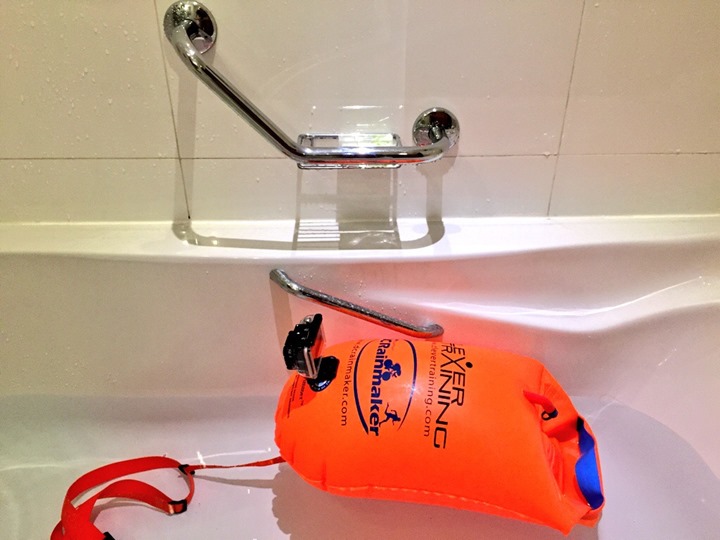
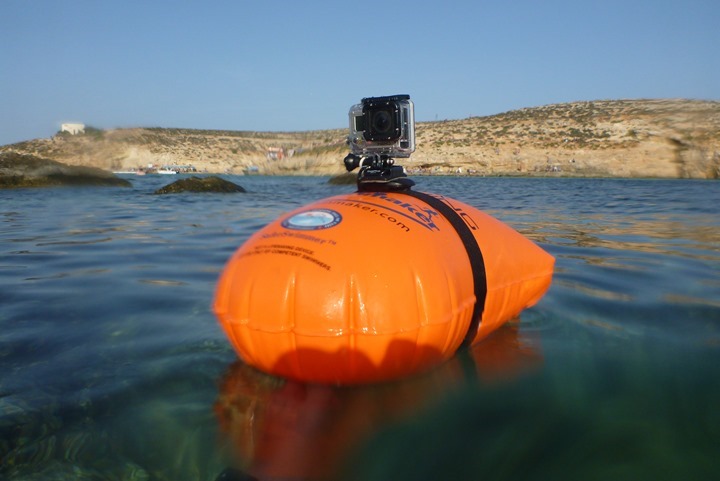
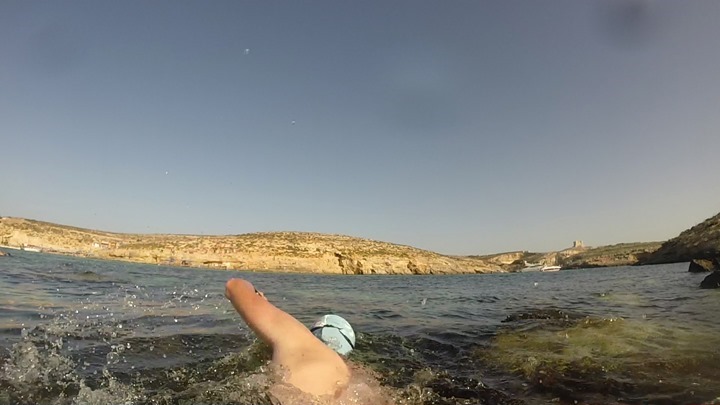
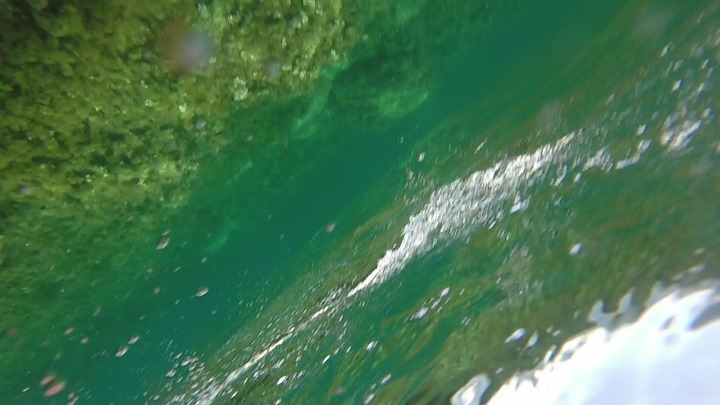
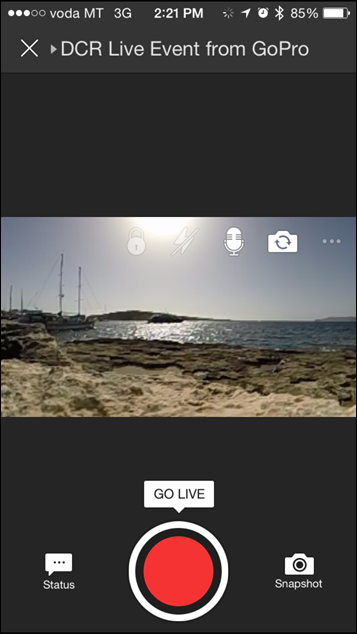



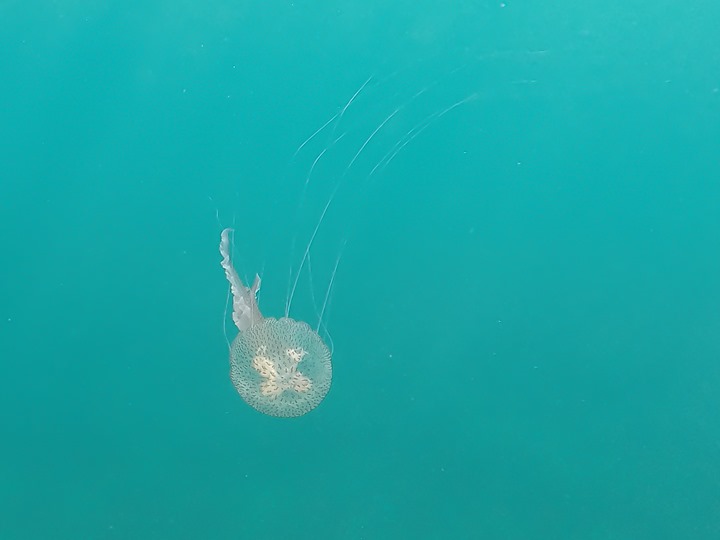
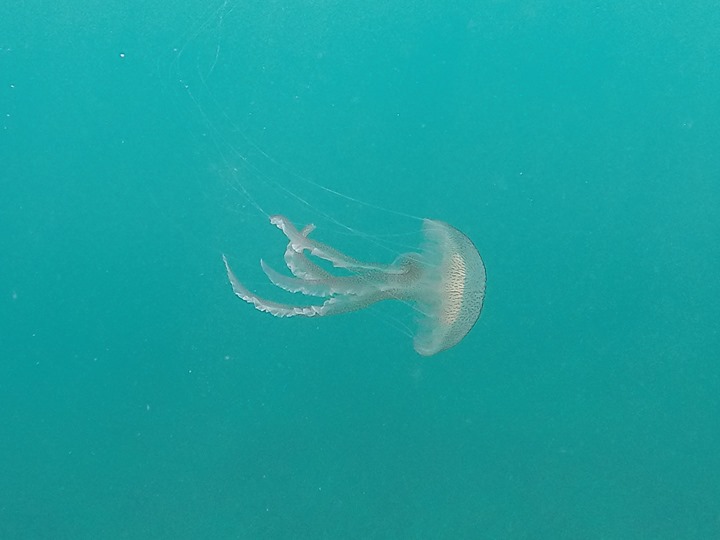
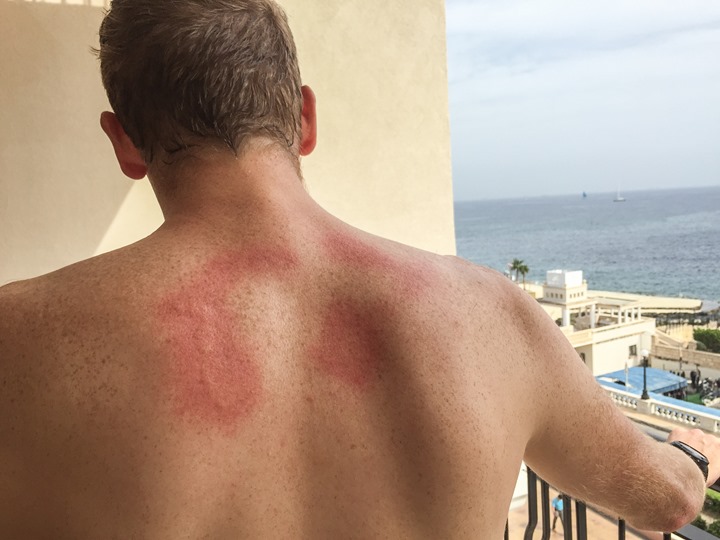

















Only place I’ve had a jellyfish sting, Malta.
A local told me (well my Dad) to put whisky on it… it strangely worked!
That’s simply because whisky works for everything 😉
I bet he meant for you to drink the whisky. 🙂
Best thing against jellyfish is hot water. It decomposes the poison.
While drinking lots of whisky, of course.
Bonjour Ray, le bracelet MIO est-il réellement efficace avec la 920XT pour la natation?
Ou
Faut-il attendre la commercialisation d’autres produit du même genre?
Merci
____________________________________________________________________
Good morning Ray, the bracelet MIO is indeed efficient with the 920XT for swimming?
Where
Is it necessary to wait the marketing of others produces the same type?
Thank you
Ray
Do you consider it a possibility that Garmin, once the 920xt availability is redundant (Q1 or Q2 2015 IMO), will come out with a new heart rate strap / wrist band that will enable HR while swimming (pool + open)? If it would be a heart rate breast strap, maybe with the same technique/process as with the Ambit3?
Random thought: why not make an optical wrist band that can be worn ‘under’ the 920xt, as a sort ‘add on’; a sort of thin wrist band, maybe in a soft rubber or textile, that can be worn under your 920 XT and which follows the contour of the 920 / or in which the 920 can fit/clip. I used the combo 910+mio link for running (next to each other), and found it annoying to wear two wristbands next to each other, especially since that blocks the up and down buttons of the 910xt.
Tom, I wear mio link on left wrist with 910xt but have the link to the left of the watch thereby leaving up down buttons un obscured.
Surely an aftermarket opportunity for someone to sell a 910xt strap with a compartment to accommodate the mio link pod in it. I’m hoping that garmin will go the tomtom route and have two versions of 920xt, one with integrated optical hrm and the other not.
“I’m hoping that garmin will go the tomtom route and have two versions of 920xt, one with integrated optical hrm and the other not”
That, or producing an alternative HR optical strap like suggested. IMO, a 920Xt with optical HR would give problems to produce Running Dynamics data.
Oh well, we’ll see. I try to look at it at the bright side: the ‘goodiness’ will come in phases 🙂
I talked a little bit about it in my ANT+ Symposium Keynote. At the moment, I suspect that all of the big majors (Polar/Suunto/Garmin) are investigating, but until they can get the success rate of optical closer to 100%, I think they’ll hold off.
At present, optical works well for perhaps 95% of people, but the 5% are tough (heck, even look at the first half of my swim). Those 5% numbers aren’t acceptable for a company of Gamrin’s size, whereas a Mio or TomTom can kinda fly beneath the radar there.
It happened to me coming out of st Juilians Bay last time I was there. Only place I have ever been stung is Malta!
Just curious how you keep the scosche on your arm? Thought I would try mine last triathlon I did and to my dismay when I got out of the water it was no longer on my wrist.
Use the strap, but I’ve only done it in a pool – haven’t ventured into a full-on tri or OW swim with it yet. I’d be reasonably concerned in a tri with it.
So even though it’s only IP67 it is good for a dip in the pool? I’m tempted to try it now! 😀
IPx7 means that it is good for immersion continuously in water up to 1m in depth. In short it is waterproof.
link to en.wikipedia.org
Stop teasing us with the 920xt – I want mine already!!
Seriously, can’t wait.
Great blog again, Ray. Love the idea of all this functionality finally getting to the point where it’s all nearly working together.
Not hard to see that in a few years, GoPro will have all the pros at Kona with one on their bike and we’ll be able to choose the livestream we want to watch from the comfort of our air conditioned homes!
Very cool! Good job!
I’ve been having the same issue with the Mio, where halfway through it “switches” and suddenly begins having the correct data, whereas before it was abnormally low. Haven’t been able to consistently solve this yet though.
Hello Chris L
I have been using a Mio Link with an Ambit3 for the past 10 days. I found the correct position after several tries : just like Ray in fact, beside the watch. And it works perfectly. The main issue for me is sweat on the device, the strap must be real tight. Or you see your HR jumps from 120 to 273 🙂
You’re a tough guy Ray. Those jellyfish burns like hell in my case…..
Necessity is the mother of invention. Pretty cool putting together the swim cam and connecting it to streaming – soon it will be possible to stream a whole Tri event.
Looking at some of the tracks I saw zig-zags, and the first thing that popped into to my head was finding/avoiding aquatic life. That, or significant waves pushing you off course.
Always enjoy the adventures!
Ray,
Great write-up on swimming with data galore. Will you review the latest Sony Action Cam Mini any time? It seems to have real time streaming capability as well using a different streaming service provider.
Yeah, I’m looking at it as well. I’ve got the full versions, but lack the Mini. I’m really surprised they went sans-GPS in the mini, as that was a core differentiator for the product.
Actually you still get GPS with the Mini as long as you use the LCD remote. From what I understand they reloacted the GPS into the remote control.
P.S. I sent you an e-mail regarding watch choice for a kiddo.
great job!
when in New zeland ceck what happen: live track+ running to see the gps map how it loks
if possible also: live track+ hike+ ultratrac
I’m very “invidioso” (you can learn a lttle of italian) of you about your trip to new zeand !!!!
Yup, I’ll definitely broadcast some of my rides and runs. I don’t expect there to be issues though, as I haven’t seen issues in the past there.
Cool stuff Ray.
What you did with the GoPro on the swim buoy is a great idea. I don’t know if you are still going to figure something out to make it work, but i was thinking you could strap two buoys together and have the GoPro mounted in the middle of them. It’d take some creativity but It’d work!
Yup, I think if I just add a tiny bit of weight (sandals) to the buoy next time it’ll work. Looking forward to trying it in Auckland, or at worst in my post-Auckland locale.
Sure! Haha I’m curious to see how this turns out. Good luck with it 🙂 (I like the practical-ness of it using a sandal since you’ll most likely be wearing/bringing them with you to the water).
Next time you’re around let us (Team Fabio, find us on FB) know. At least we know where the jellyfish risk is the lowest (thought it is not completely avoidable and part of the game). (You also missed a good olympic here on the 12th…)
Awesome swim, like a hero!! Thanks for share your experience and this valious information!!
G’day Ray might be a cousin of Australias deadly Box jellyfish [a nasty an cranky character] link to en.wikipedia.org they say pee fixes it but where you got wiped wouldn’t be pleasurable I would’nt think..thanks great artice
You could use the life guard float thingee instead of the inflatable buoy. It would provide a solid surface for the go pro and probably won’t rotate. Or maybe just a regular kickboard?
Yeah, I do know a kickboard would work well. Though, I didn’t really want to tow two things (since the kickboard wouldn’t be visible from boats).
paint it orange and stick a strobe on it… :-))
or anti boat missiles and a force field generator to keep stinging animals away from you. Excuse me for being silly…
lol. I had the same experience last year. I had never encountered jellyfish so I though it was just my imagination trying to scare me out of the murky, dirty water. After swimming for about a mile and a half, I decided that I was done. My whole back was red and puffy. The resort posted their Jellyfish warning while I was swimming and didn’t bother to send someone to let me know. Hahaha.
I use the Scosche in the pool with the band as high up on my arm as possible. I then put my Android phone in a Ziplock baggy on the pool deck. I am able to record heart rate while swimming!
I think the sensor is out of the water enough of the time to let the algorithm fill in the whatever is missed while underwater. It works great and is a lot cheaper than a watch.
Add a keel to your buoy, maybe this can preventing capsizing
That’s a great idea for capturing video while swimming. Going to have to try and figure that one out… Any suggestions on how to capture usable footage while running?
I’m reminded of this guy who created “frankenfish” to tow his gopro. After $86 he still didn’t have a satisfactory solution. link to robaquatics.com
He should have asked Ray for advice!
Ray, Uric acid for jellyfish stings is a known pain reliever;)
Pretty interested to see further developments in quality live streaming video regardless of the platform. Think this will really culminate in some interesting approached around the games in Rio…
Ray,
Do you if the Mio works with any other Garmin devices (heart rate while swimming)?
Thanks,
Falko
Yes, it works with all Garmin devices. However, none of the Garmin devices permit pairing with a HR sensor within the swim mode itself.
Mediterranean swim…and you only encountered jelly fish! I’d say you are lucky you didn’t run into the shrieking eels. I guess you’d hear them coming though; they always grow louder when they are about to feed on human flesh!!!!
link to corerulebook.files.wordpress.com
You were lucky you don’t met this animal : link to en.wikipedia.org
They have been seen at Malta too. Their stings are very painfull. They are responsible for up to 10000 human stings in Australia each summer. But they are not frequent at the Mediterranean Sea.
link to timesofmalta.com
I live in Sydney, Australia – we call those ones blue bottles.
They’re not too bad, actually – they sting a bit, but on the whole, they’re relatively harmless (unless you’re allergic, of course). They don’t cause any lasting damage. I’ve been stung quite a few times.
If I was going to be stung, I’d much prefer one of those, than to much more dangerous jellyfish. For example, one of these:
link to en.wikipedia.org
We have those up further north, in Queensland. (Fortunately not normally here in NSW *shudders*).
The transmission of heart rate data in the water from the strap to the watch is not a matter of analog or digital signal transmission. The transmission frequency must be lough enough, a VLF frequency less than 30 kHz will do, but 2.4 GHz are way to high for use in the water from your chest to your hand.
Ray, The water bottle carrying version of the SafeSwimmer would allow you to strap your GoPro and would not flip over. You could even use a magnetic base. Additionally, for those that are simply interested in smoothing the track the GPS records of their swim, then the following two pictures showing how to attach the Garmin to the SafeSwimmer might be of use. Photo ONE: This is the water bottle carrying version of the SafeSwimmer using the wetsuit extension wrist strap that comes with the 910 xt to provide the extra girth needed to get around the tube. Alternatively, you can make a small slit or two in the cover directly above the cavity. This slit will accommodate the wrist band of your device. Photo TWO: Simply fasten the buckle of your wristband through the buckle of the original SafeSwimmer after inflation. Keep up the good work Ray. I really appreciate your efforts and your willingness to share!
Photo One: link to tinyurl.com
Photo Two: link to tinyurl.com
Very interesting, hadn’t considered that model. Will have to poke around a bit!
Hi Ray
Since the myo is an optical sensor. the immersion in water due to water pressure and cold will cause a central redistribution of blood volume, making the capillary pulse weaker and thus less detectable with an optical sensor. same thing happens in anaesthesia with hypovolaemic and cold patients with O2 sat monitors (that work by detecting the pulse part of the peripheral circulation). I suppose after 20 of so minutes you probably had warmed up after the immersion to restore your peripheral vlume through attempted heat loss and physiological recruitment of periphaeral circulation due to exercise.That might expalin the improved accuracy. thus making it difficult to see what you could do to improve this (other than warm up for quite a while in the water before you do your set?)
bw
Hamish
(Ps keep up the good work, your reviews are awesome!)
Interesting that your Mio survived – I used mine paired to a Garmin 910 for the London Triathlon earlier this year and the Mio died towards the end of the swim.
I am tempted to buy another and test it wrapped in clingfilm.
I am trying to pair the Mio Link with my Fenix 2 but the Fenix does not see the device. I can pair it to any mobile device but this does not work.
I have the HRM-Run paired with the watch. Do I need to somehow unpair that before the Mio will be seen?
Hi Ray,
Its not so clear on here so sorry if i’m asking for something that you or others have talked about. Can the 920xt receive an ANT+ signal in swim mode?
The 910, as far as I know can only receive the signal in the other modes – so I’ve not been able to view my HR on anything else other than timed swim efforts – so there has been no benefit of counting lengths or distances or seeing the difference between warm ups or all out efforts etc.
Can anyone shed any light on this?
Hi, I´m from Peru, i swam the last weekend in open water and i have wrong lectures about the distance in my 920xt, I notice this because a friend was with his 910xt and we use to swim with his data information. I have to turn on the glonass GPS in my 920xt and the lectura was similar with the lecture of my friend. The question is if this is normal? i have to report this to garmin, or is better to turn on the glonass gps ever. Sorry for my English.
Another problem, is the syncronization with the garmin connect, the hours of the activies doesn´t show the real time, this is only in the garmin connect, i have to modified something, i had a 310xt and dont have any trouble,
Thanks for your answer
Any idea on how many MB of mobile data the Live Track feature uses?
I’m training for IM Canada, and was definitely considering doing a live broadcast of the race via my phone, but since I will be outside of US borders, I will have to purchase a roaming data plan. I’m just trying to get a sense for how much data this would consume over 14-16 hours to see how much that might run me.
I actually don’t have the exact stats. Not much though from what I’ve seen. I think someone did a test on the Garmin Forums trying to work out the numbers back when the Edge 510/810 came out. Same tech/app, so numbers should be the same.
Ray-
In an earlier question about HRM+swimming, you mentioned in response #43:
“Yes, it works with all Garmin devices. However, none of the Garmin devices permit pairing with a HR sensor within the swim mode itself.”
If the ‘open water swim’ activity does not actually show feedback that it’s communicating with the HR sensor…how do we know it’s working and logging the HR data? Which 920xt firmware version did you test this with if you recall?
Would appreciate it if you could confirm.
Vlad
Thank you for the very comprehensive review. I have the similar set up of Mio link besides the 920XT for the open water swim leg of my triathlon race, but I am unable to view the heart rate on the Garmin Connect. There is only option of pace and stroke in the “Customize” screen. Is there any other steps I need to perform to see the heart rate screen as shown in your review?
I’ve been using FR60 + Mio Link for swimming for some months now; I suspect my FR60 is going to expire soon (either strap or water ingress will get it before too long…) Currently it looks like I’ll be buying an Ambit 2S/3 to replace it, but would much prefer a 920XT or Fenix3 – Is there any hope Garmin will enable HR in Swim mode? I’ve posted in their forums, but don’t really feel I can open a support case for a device I don’t own (Fenix3/920XT) – is there anything else I/we can do to ensure Garmin are aware that at least some of their customers want this feature?
Clearly as they’ve enabled it for openwater swim mode they’re not that bothered about getting reports of the chest strap not working…
Hi
i using garmin 920 with MIO wristband , on swimming i put it near the garmin
and it’s shows the heart rate but when i done and save the data of the swim it’s doesn’t
save the heart rate data, is it on purpose or i have problem ?